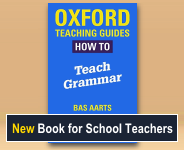Genre of Recipes
Goals:
- Compare the discourse structure and register features of two recipes
- Identify which grammatical features can be omitted for effect
- Analyse why recipes follow a predictable structure and set of features
Lesson Plan
Before this lesson, you may want to complete the lesson An Introduction to Genre, so that learners are familiar with the key terms discourse structure and register
Please check if there are any hand outs at the bottom of this page and print in advance.
Warmer
Use the bulletpoints to introduce the topic and activate the pupils' prior learning. Circulate to monitor the discussion. You could use mini-whiteboards to share/check their answers for the third point.
Activity 1
Explain that learners must work in pairs or small groups. One half works with Recipe A and the other with Recipe B. Hand out the printed recipes. Learners then take turns to discuss the bulletpoints. Again, try using mini-whiteboards to share answers to the final point. Hopefully, learners will start to notice language and structural features as these are the focus of the rest of the lesson.
Activity 2
Ask learners to recall the meaning of discourse structure and register features. They should be familiar with these terms from the introductory lesson.
Next, each learner looks at their recipe and identifies and labels the sections. As as an example, the title is labelled in both recipes. After five minutes, compare with a partner. They should have identified similar sections in each recipe, since this genre follows a predictable structure. Then, use the second worksheet, so learners can check their answers (it might be easier to show this to the whole class via the screen/whiteboard). Accept any reasonable equivalent answers.
Scaffolding: If learners are struggling, provide them with the names of the six sections: Title, Recommendation, Ingredients, Instructions, Nutritional Information, and Timings.
Answers for Extension tasks:
- The Title, Ingredients and Instructions should usually stay in the same order. However, it's possible to vary the order of the others, e.g. placing the preparation time and nutritional information at the start.
- Extra presentation features: quotation marks, bold text, underlining, bullet-points, paragraphing.
Activity 3
Now, change the focus to the register features of the texts. Ask lthe earners to read the texts again, this time highlighting or underlining any words or phrases that seem important to creating meaning and effect. Use the noun phrases in the titles as an example of the kinds of features they can identify.
Next, do the mix and match activity as a whole class. Then learners check to see if they identified any of the same language features, and label any missing ones. Match the language features in CAPITALS to the example. Drag the cards together to connect, and double-click to separate. The correct answers are:
NUMBERS: 5 minutes/3 large eggs
NOUN PHRASES: red onion/roasting tray
IMPERATIVES: Grill the vegetables/Add sour cream
ABBREVIATIONS: tsp/g/cals/carbs
PREPOSITION PHRASES: in 30 minutes/with wax paper
Check to see if learners identified any other language features with examples from the texts.
Activity 4
Ask the learners to read the instruction section again and note which grammatical features are missing. To demonstrate, show them the example sentence and how it would be written normally. To demonstrate their understanding, learners then rewrite the second example sentence. Reveal the answer sentence so learners can check. (Of course, there is more than one correct way to rewrite this sentence! Accept any grammatical answers.)
Activity 5
Ask learners to recall as many features as they can remember from the day's lesson. Reveal the list to check how many they retained.
Ask learners to discuss the final question. Take answers from the groups; then reveal the example answer so pupils can see how similar their responses are. Accept any suitable answers.
Activity 6
As homework or extension activities in class, learners can complete these tasks from the handout. For Part 1, you could set a short analytical writing task of the new recipe. For Part 2, learners can use the checklist to evaluate each other's work.
Welcome!

Englicious is totally free for everyone to use!
But in exchange, we ask that you register for an account on our site.
If you’ve already registered, you can log in straight away.
Since this is your first visit today, you can see this page by clicking the button below.
- Printer-friendly version
- Log in to view or leave comments

